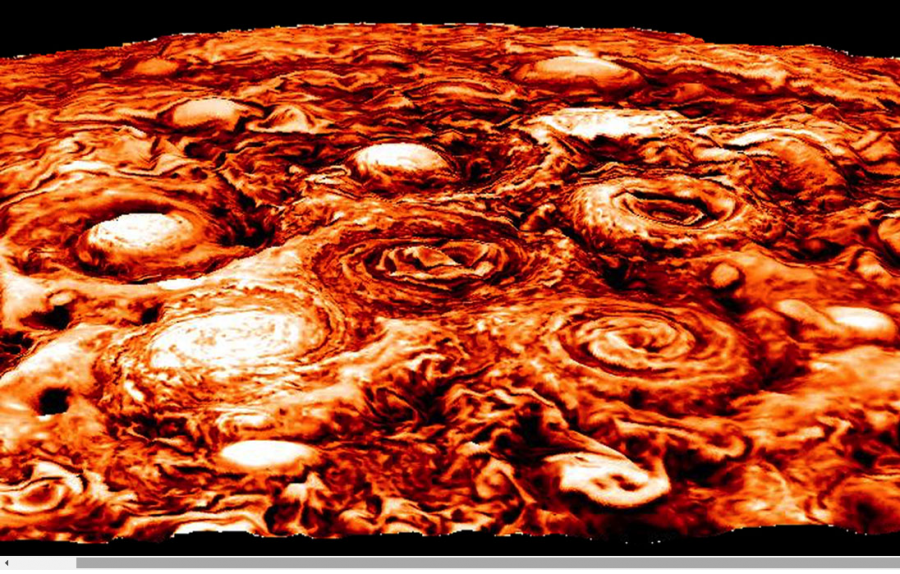NASA’s Juno Mission has revealed Jupiter’s cyclone clusters mystery and showed that a certain amount of polygonally shaped cyclones that lye deep in 1,900 miles into the surface that are now visible thanks to NASA’s efforts.
These cyclones have been spotted near the planet’s poles, which have been a mystery for a while now. However, the geometrical patterns formed in the depths and surfaces of the planet have been an astonishing surprise. This is accredited to NASA’S Juno mission orbit, which is unlike Earth and other spacecraft orbits that only allow the sighting of Jupiter’s equatorial regions.
Jupiter has always been recognizable for its rotating zones and belts; however, it has also been revealed that these patterns are made by fast jet streams. For a while now it’s been unknown what goes on below Jupiter’s clouds besides its rotational patterns, but now it has been revealed that there is even a pentagon at its south pole and this structure persists 3000km deep.
Jupiter’s Juno Mission keeps discovering new things
Jupiter is known as the gas planet in our galaxy, and NASA’s findings indicate that the atmospheric winds of the planet can be found deep in its atmosphere and that these last longer inside.
Juno co-investigator from the Weizmann Institute of Science, Rehovot, Israel, Yohai Kaspi, explained the mission’s breakthrough to understanding the asymmetry of the planet.
“Until now, we only had a superficial understanding of them and have been able to relate these stripes to cloud features along Jupiter’s jets. Now, following the Juno gravity measurements, we know how deep the jets extend and what their structure is beneath the visible clouds. It’s like going from a 2-D picture to a 3-D version in high definition.”
The planet’s asymmetry according to NASA “can only come from flows deep within the planet” in this the planets weather and temperature have great influence as well on characteristic zones and belts.
NASA used JIRAM to image Jupiter’s cyclones
NASA’S Juno Mission employs JIRAM (Jovian Infrared Auroral Mapper) to collect data in an infrared format. This technology has been used to publish Jupiter’s North Pole central cyclone images with eight other encircling it.
The JIRAM is NASA’S tool for the surveying of the spacecraft orbiting Jupiter, and it complies with the examination and thorough probe of the upper layers of Jupiter’s atmosphere in pressures of 5 to 7 bars. It was originally employed to study the atmosphere’s chemistry and dynamics, but it was recently used to determine how hot spots are formed in Jupiter.
Source: NASA



